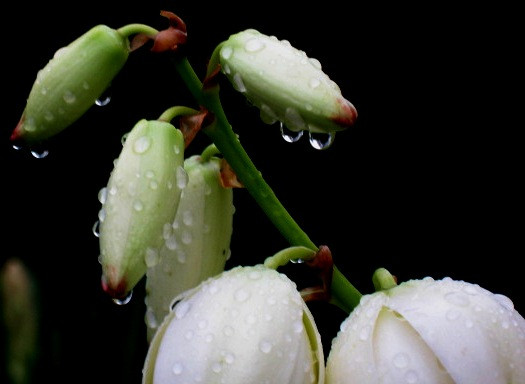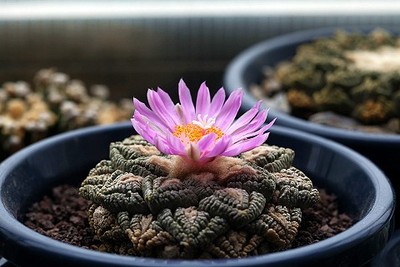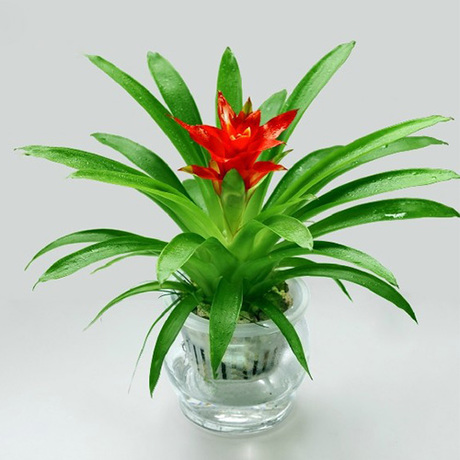The culture method of sword orchid A picture of sword orchid
It's nice to grow potted plants indoors. Sword orchid, the scientific name is Gladiolus. It's not an orchid. It is a bulbous plant of Iridaceae. Sword orchid plant height 80-170 cm, green leaves alternate, arranged in two rows, corm oblate or ovoid, with annular nodes. Leaves 6-9, sword-shaped. Together with roses, carnations and Fulang flowers, it is known as the "four cut flowers in the world". The sword orchid has even won the title of "the leader of cut flowers" and has been popular in the international flower bed. Its variety is various, the flower color is gorgeous, the florescence is long, the flower posture is rich in decoration. Mainly used for vase or making bouquet, flower blue. In addition to making cut flowers, it is also suitable for potted plants, flower beds and so on. Sword orchid plant height 80-170 cm sword orchid, green leaves alternate, arranged in two rows, bulb oblate or ovoid, with annular nodes. Leaves 6-9, sword-shaped. The flowering season is extracted from the leaves, up to 1 meter long, showing a spike, with 13 or 14 flowers per branch, each with 6 petals, and the upper 3 petals are slightly larger, with wavy folds on the edge, as thin as silk silk, gorgeous, blooming from the bottom to the top, like exquisite trumpets when in full bloom. The colors are fuchsia, orange, pure white, sky blue, pink and so on. Some varieties of petals are also full of colorful spots, delicate and graceful, just like cardamom, a young girl with weak bones and abundant muscles, with its graceful and gorgeous appearance, many flower lovers are infatuated with it. Next, the editor of the net will introduce the sword orchid to you.

The culture method of sword orchid A picture of sword orchid
Today, "the cultivation methods and matters needing attention of sword orchids" introduce to flower friends how to raise sword orchids. Sword orchids are one of the four largest cut flowers in the world, and they are very popular at home and abroad. although there are many varieties of sword orchids, the culture methods of sword orchids are all the same. Sword orchid flowers are colorful, the florescence is long, and the flower posture is very decorative. Mainly used for vase or making bouquet, flower blue. In addition to making cut flowers, it is also suitable for potted plants, flower beds and so on.
Plant name: sword orchid
Aliases: Gladiolus, Holland Changpu
Family: Iridaceae
Genus: Gladiolus
Color: rouge, pink, orange, pure white, sky blue and so on.
Origin: originally from tropical Africa and the Mediterranean.
Plant height: 80cm to 170cm.
Ecological habits: light-loving long-day plants, winter cultivation cloudy days to increase light, afraid of cold.
The suitable temperature for growth is 20 ℃ ~ 25 ℃ in daytime and 10 ℃ ~ 15 ℃ at night.
Culture methods of sword orchid
It is a light-loving long-day plant, avoid cold, like cool climate in summer, can not tolerate excessive heat, the corm germinates under the condition of 4: 5 ℃, and the growth of 20: 25 ℃ is the best. The nature likes the rich and deep sandy soil, which requires good drainage, so it is not suitable to plant in the place where heavy soil is prone to waterlogging. The summer growth in Northeast and North China is better than that in Guangzhou and Shanghai. In winter in Shanghai, you can safely spend the winter in the open field, while in the north, you need to dig out the bulbs and put them indoors for the winter.
The reproduction of sword orchid is mainly divided ball reproduction, the new ball blossoms in the second year, in order to accelerate reproduction, the bulb can also be cut, each piece must have bud and root part, the incision must be coated with plant ash, slightly dried and planted, when cultivating new varieties, multi-use sowing and propagation, seeds are picked in autumn and sowing, and the germination rate is high; winter seedlings are transferred to greenhouse culture, the Spring Equinox is planted in the open field, strengthen management, some seedlings can blossom in autumn.
How to raise sword orchid
Sword orchids like cool, not cold-resistant, afraid of extreme heat, requiring loose, fertile, moist, well-drained soil. The optimum temperature for growth was 20: 25 ℃ during the day and 10: 15 ℃ at night. Sword orchid is a long-day plant, and the most suitable light is 16 hours a day.
Medium: sword orchid likes fertile, well-drained sandy loam, avoid too wet soil.
Watering: sword orchid should not be watered too much at the initial stage of cultivation; continuous watering is needed during the growing period to keep the basin soil moist; after the flower stem is extracted, it is necessary to spray water on the leaf surface once or twice a day to increase air humidity.
Fertilization: before and after flowering, the sword orchid was treated with dilute organic fertilizer matured twice, and more potash fertilizer was applied after flowering to promote the growth of globules.
Pruning: cut off the Huating of the residual flowers after blooming.
Tips: buy those whose stems are upright and sturdy, and whose flowers are tall.
Points for attention
The bulb disease of sword orchid is more serious, so corm disinfection is an important measure. The method is to remove the corm membrane, soak in clear water for 15 minutes, then soak in 80 times formalin solution for 30 minutes or 0.2% ammonium bromide for 10 minutes, then rinse with clean water for 10 minutes. It is hot and humid in summer, and it is easy to suffer from bacterial blight. In addition to spraying 1000 times Tobujin solution or combined with irrigation, we should also pay attention to avoid drooping flowers. If nematode damage is found, the seed ball should be dug up and burned. In addition to soil disinfection, rotation must also be carried out.
Culture method of sword orchid data of sword orchid (Gladiolus)
The sword orchid, also known as Gladiolus, which is rich in "the leader of cut flowers", can not only be used as a place for cut flowers, but also suitable for potted plants, arranging flower beds, etc., so how to raise sword orchids? What kind of meaning will its flowers have? Next, we will combine the pictures of sword orchids to talk about the culture methods of sword orchids.
[plant archives]--
English name: gladiolus
Study: Gladiolus hybrids
Aliases: calamus orchid, sword orchid, flat bamboo lotus, ten samples of brocade, 13 Taibao
Family: Iridaceae
Genus: Gladiolus
Distribution: native to tropical Africa and the Mediterranean, widely cultivated in North America, Western Europe, Japan and China
Morphological features: perennial herbs. Sword orchid plant height 80-170 cm, green leaves alternate, arranged in two rows, corm oblate or ovoid, with annular nodes. Leaves 6-9, sword-shaped. The flowering season is extracted from the leaves, up to 1 meter long, showing a spike, with 13 or 14 flowers per branch, each with 6 petals, and the upper 3 petals are slightly larger, with wavy folds on the edge, as thin as silk silk, gorgeous, blooming from the bottom to the top, like exquisite trumpets when in full bloom. The colors are fuchsia, orange, pure white, sky blue, pink and so on.
How to keep the sword orchid?
◆ growth habits: light-loving long-day plants, avoid cold, like cool climate in summer, can not tolerate excessive heat, corms germinate at 4: 5 ℃, and grow best at 20: 25 ℃.
◆ soil: sword orchid like cool, not cold-resistant, afraid of extreme heat, requires loose, fertile, moist, well-drained soil.
◆ watering: it is not suitable to water too much at the initial stage of cultivation; continuous watering is needed during the growing period to keep the basin soil moist; after the flower stem is drawn, it is necessary to spray water on the leaf surface once or twice a day to increase air humidity.
◆ fertilization: sufficient base fertilizer was applied in the soil before planting, and the type of base fertilizer was rich in phosphorus and potassium. Apply rarefied organic fertilizer before and after flowering and apply more potash fertilizer after flowering to promote the growth of globules.
◆ pruning: cut off the Huating of the residual flowers after flowering.
◆ Sunshine: gladiolus is a long-day plant, and the most suitable light is 16 hours a day.
◆ temperature setting: the optimum temperature for growth is 20: 25 ℃ during the day and 10: 15 ℃ at night. Gladiolus is a long-day plant, and the light of 16 hours a day is the most suitable.
◆ disease and insect damage: the harm of copper green golden turtle of sword orchid is widely distributed in China and the damage is serious. Both adults and larvae can do harm, and the harm of larvae is the most serious. The main damage is that the larvae feed on the germinated seeds in the soil, resulting in lack of seedlings and broken ridges; bite off the roots and roots, so that the plants die, and the wound is easy to be invaded by bacteria, resulting in plant diseases.
[more Encyclopedia of plants]
The symbolic meaning of lilies pictures of Platycodon grandiflorum flamingos how to raise lover grass happiness tree picture moss how to raise radiation-proof flowers
When do cherry blossoms in Xiangxianren Mountain open to plant grapes? what plants absorb formaldehyde? gardenia leaves? how to raise orchids?
The culture method of Phoenix tail bamboo how to cultivate hyacinth how to plant lotus money tree blossom radiation protection plant begonia
Introduction to the culture methods and matters needing attention of sword orchid
Sword orchid originated in South Africa, the flowers are of various colors, mainly red, yellow, purple and blue. It is cultivated all over the world, and it is mainly cultivated in the United States, the Netherlands and Japan. It is an extremely important fresh cut flower, which is widely used for decoration, interruption and so on. The following wed114 will introduce the sword orchid flower language, sword orchid breeding methods and matters needing attention!
Culture methods of sword orchid
Growth characteristics of Cymbidium
Sword orchid is a sunny plant, likes to grow in sunny places, but when planting in summer, it should be noted that sword orchid likes cool climate in summer and is not resistant to heat, must not be exposed to the sun, the growth of sword orchid is not resistant to cold, and it should be planted in winter. Its main growing places are in the northeast, North China, and Guangzhou and injury in the south. Generally, sword orchids live indoors in winter, and in the south they can safely spend the winter in the open field. The growing environment of sword orchid requires that the soil has good drainage, preferably sandy soil, and should not be planted in the place where there is waterlogging.
Culture methods of sword orchid
The floral language of sword orchid
Sword orchid is generally used as a flower to express nostalgia, as well as to express love and longevity. In Chinese senses, sword orchid is used as a blessing plant to signify rising and sturdiness. Fulu is the object of many congratulations on the application of flower baskets. European and American countries grow sword orchid, it is said that sword orchid is the embodiment of samurai dragon sword, can be home to each other, because it is often used as a plant. Sword orchid expresses love, and the flower language means "tryst", but the flower language that extends on the basis of this flower language also has "intention", because although the tryst can make the feeling rise, but the heart is more important.
Culture methods of sword orchid
Pot media are not only rich in humus and fertile, but also loose, good air permeability, good drainage and slightly acidic soil. A mixed cultivation medium can be purchased, or a well-mixed basin soil can be prepared according to the following formula: rotten leaf soil (or peat soil) 1, 2, 3, 4, 2, river sand (not too fine), 1, 2, 1, 1, 2, 2, and mixed with 3% to 5% rotten chicken manure, cake fertilizer and other high-quality organic fertilizer and bone meal.
Culture methods of sword orchid
The optimum temperature in summer is 25: 30 ℃, and that in winter is 15: 18 ℃. The lowest temperature should not be lower than 12 ℃. When the temperature is high, the plants can be sprayed with water. The soft sunshine makes the leaves more beautiful. During the growing season, a large amount of water can be watered and some water can be irrigated in the rosette leaf tube at the same time. After each watering, wait for the basin soil to be dry and then irrigate the second time, not too much. The basin soil should be a little drier in winter. During the vigorous growth period from May to September, fertilizer was applied every two weeks. In addition, phosphorus and potassium fertilizer should be applied twice.
- Prev

Picture of tortoise peony how to raise tortoise shell peony
What does a peony look like in armor? Tortoise shell peony is native to southwestern Texas and northern Mexico. It likes adequate and soft sunshine, air circulation, and requires a certain degree of air humidity in the cultivation site. Water should be fully watered during the growing season, but continuous stagnant water in the basin is avoided.
- Next

Pineapple culture method pineapple flower picture
Everyone has eaten pineapple, that is, pineapple. Pineapple flowers grow like pineapples. Pineapple family, native to Mexico to southern Brazil and northern Argentina jungle, about 50 species, most of which are geophytic. The leaves are sickle-shaped, with the upper half tilted downward, with 5-8 rosette-shaped leaves arranged in a tubular shape.
Related
- Fuxing push coffee new agricultural production and marketing class: lack of small-scale processing plants
- Jujube rice field leisure farm deep ploughing Yilan for five years to create a space for organic food and play
- Nongyu Farm-A trial of organic papaya for brave women with advanced technology
- Four points for attention in the prevention and control of diseases and insect pests of edible fungi
- How to add nutrient solution to Edible Fungi
- Is there any good way to control edible fungus mites?
- Open Inoculation Technology of Edible Fungi
- Is there any clever way to use fertilizer for edible fungus in winter?
- What agents are used to kill the pathogens of edible fungi in the mushroom shed?
- Rapid drying of Edible Fungi

